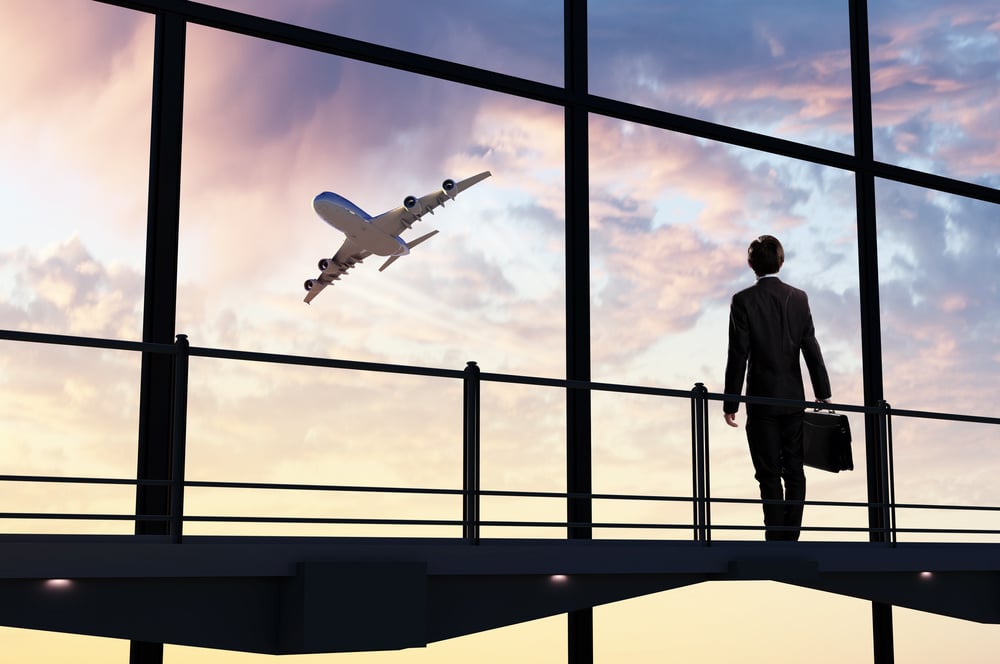Introduction: Soar Above Your Fears
The fear of flying, or aviophobia, can feel like an insurmountable obstacle. It can limit your ability to explore the world, connect with loved ones, and seize opportunities. However, millions of people successfully manage and overcome this fear every year. This comprehensive guide will equip you with the knowledge, strategies, and resources to break free from aviophobia and embrace the freedom of air travel.
Understanding Aviophobia: What's Behind the Fear?
Aviophobia is a specific phobia characterized by an intense and irrational fear of flying. It can manifest in various ways, from mild anxiety to full-blown panic attacks.
- Prevalence: Approximately 25% of the population experiences some level of anxiety about flying (American Psychological Association, 2017).
- Different Types: Aviophobia isn't always just a fear of crashing. It can include fears of heights, enclosed spaces, turbulence, losing control, or even terrorism.
- Symptoms: Physical symptoms can include sweating, rapid heartbeat, shortness of breath, nausea, and dizziness. Emotional symptoms include anxiety, panic, dread, and a sense of impending doom.
Reading about your fears may not be pleasant, but we're here to guide you through the process of understanding and overcoming them.
The Science of Flight Safety: Facts Over Fear
Understanding the science behind flying can help dispel many fears.
How Airplanes Work
Airplanes are designed to be incredibly safe, with multiple redundant systems and rigorous maintenance procedures. Every component, from the smallest sensor to the most expansive wing, undergoes rigorous scrutiny to ensure the highest level of reliability. Multiple redundant systems serve as a protective net, providing backups for crucial functions and preventing catastrophic failures. These systems are designed to monitor and regulate various aspects of the aircraft, such as engine performance, flight controls, and navigation. Regular maintenance procedures, conducted by highly trained professionals, further enhance the safety of these systems. Technicians scrutinize every inch of the aircraft, identifying and resolving potential issues before they can escalate. This relentless pursuit of safety ensures that passengers can board every flight with confidence, knowing that they are in the hands of a meticulously maintained and technologically advanced machine.
Turbulence Explained
Turbulence, while an often-uncomfortable experience for passengers, is rarely a cause for concern regarding safety. It occurs due to variations in air currents, much like encountering bumps on a road while driving. The atmosphere is a fluid medium, and air moves in complex patterns influenced by factors such as wind speed, temperature differences, and terrain. When an aircraft encounters these turbulent air currents, it experiences sudden changes in velocity and direction, resulting in the characteristic bumpy ride. Pilots undergo extensive training to handle turbulence effectively. They learn to anticipate and respond to different types of turbulence, including clear-air turbulence (CAT), which occurs in otherwise clear skies, and convective turbulence, associated with cumulus clouds and thunderstorms. Pilots are trained to adjust the aircraft's control surfaces, such as the ailerons and elevators, to maintain stability and minimize the impact of turbulence on the passengers. Additionally, they are taught to communicate effectively with air traffic control and other pilots to avoid areas of known turbulence whenever possible.
Safety Statistics: Flying vs. Car Travel
Flying is widely regarded as one of the safest modes of transportation, boasting a remarkable safety record compared to other forms of travel, particularly car travel. Statistical data consistently demonstrates that the risk of being involved in an accident while flying is significantly lower than the risk associated with car travel.
- Aviation: According to the International Air Transport Association (IATA), the global commercial aviation industry experienced an average of 0.23 fatal accidents per million flights over the past five years. This translates to approximately one fatal accident for every 4.5 million flights.
- Roadways: In contrast, road traffic accidents are a leading cause of fatalities worldwide. The World Health Organization (WHO) estimates that over 1.35 million people die annually in road traffic accidents, equating to approximately 3,700 deaths per day.
Factors Contributing to Aviation Safety:
- Rigorous Regulations: The aviation industry is subject to stringent regulations and safety standards set by national and international aviation authorities. These regulations govern everything from aircraft design and maintenance to pilot training and operational procedures.
- Advanced Technology: Modern aircraft are equipped with sophisticated technology that enhances safety, such as autopilot systems, collision avoidance systems, and weather radar.
- Pilot Training: Pilots undergo rigorous training programs that include both theoretical knowledge and practical flight experience. This training prepares pilots to handle various scenarios, including emergency situations.
- Emergency Procedures: Aircraft are equipped with numerous safety features, and crew members are trained in emergency procedures.
While no mode of transportation is entirely risk-free, flying remains one of the safest ways to travel. The exceptional safety record of the aviation industry is a testament to the dedication and professionalism of aviation professionals, as well as the stringent safety measures implemented throughout the industry.
The Psychology of Fear: Understanding Your Mind
Aviophobia is often rooted in the body's natural fight-or-flight response, which is triggered in the face of perceived danger. Several therapeutic approaches have proven effective for treating aviophobia:
- Cognitive Behavioral Therapy (CBT): CBT helps individuals identify and change negative thought patterns and behaviors related to flying.
- Exposure Therapy: Gradual exposure to flying, often in combination with relaxation techniques, can help desensitize individuals to their fear.
- Virtual Reality Exposure Therapy (VRET): VRET uses virtual simulations to provide a safe and controlled environment for exposure therapy.
- Medication: Anti-anxiety medications or sedatives may be prescribed in some cases to manage anxiety during flights.
- Hypnotherapy: Hypnosis can be used to address the underlying causes of fear and promote relaxation.
Self-Help Strategies: Taking Control of Your Fear
Many effective self-help strategies can complement professional therapy:
- "The Flight Anxiety Solution: Overcome Your Fear of Flying and Enjoy a Relaxed Journey" by David Carbonell: This book offers a step-by-step approach to overcoming flight anxiety, including techniques for relaxation and cognitive restructuring.
- "Flying Without Fear: A Practical Guide for Overcoming Anxiety and Enjoying Air Travel" by Karen Pine: This book provides practical tips and strategies for managing anxiety in-flight, as well as coping mechanisms for dealing with turbulence and other stressors.
- "Soar: The Breakthrough Treatment for Fear of Flying" by Glenn Harrold: Through a unique combination of hypnotherapy and cognitive-behavioral therapy, this book offers a comprehensive approach to overcoming flight anxiety.
Websites
- Fear of Flying: This website offered by the Anxiety and Depression Association of America provides information on the causes and symptoms of flight anxiety, as well as strategies for coping with it.
- Captain Tom Bunn's Fear of Flying: This website features a collection of articles and videos by Captain Tom Bunn, a retired airline pilot who has helped thousands of people overcome their fear of flying.
- Soar Fear of Flying: This website offers online courses, ebooks, and self-help tools designed to help people overcome flight anxiety.
Relaxation Apps
- Guided meditations, calming music, and nature sounds can help reduce anxiety.
- A specialised application for managing your fear of flying is currently in development. Share your perspectives with the team to help the team meet your needs.
- Visiting the airport before your flight can help reduce uncertainty and anxiety.
Pre-Flight Rituals
- Developing calming rituals, such as listening to music or reading a book, can help create a sense of control.
Coping Mechanisms During Flights
- Distraction techniques (reading, movies, games) and comfort items (a favorite blanket, a calming scent) can help manage anxiety during the flight.
In my experience a combination of mindfulness, distraction through movies, and grounding scents are effective. Everyone is different, and your needs will likely be met by different combinations of techniques.




